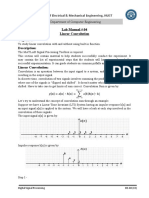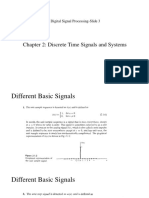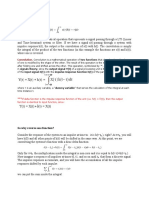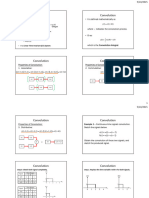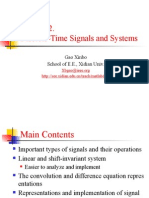0% found this document useful (0 votes)
45 views25 pagesConvolution in Signal Processing
The document discusses convolution, which is a mathematical operation used in digital signal processing. It defines convolution, covers its properties like commutative and associative, and provides examples of 1D and 2D convolution. Graphical and step-by-step methods for calculating convolution are presented.
Uploaded by
mnaCopyright
© © All Rights Reserved
We take content rights seriously. If you suspect this is your content, claim it here.
Available Formats
Download as PDF, TXT or read online on Scribd
0% found this document useful (0 votes)
45 views25 pagesConvolution in Signal Processing
The document discusses convolution, which is a mathematical operation used in digital signal processing. It defines convolution, covers its properties like commutative and associative, and provides examples of 1D and 2D convolution. Graphical and step-by-step methods for calculating convolution are presented.
Uploaded by
mnaCopyright
© © All Rights Reserved
We take content rights seriously. If you suspect this is your content, claim it here.
Available Formats
Download as PDF, TXT or read online on Scribd
/ 25



